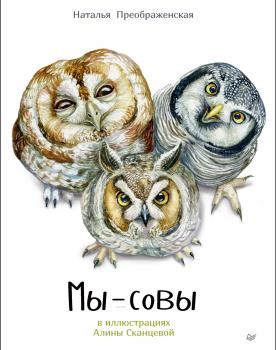Природа и животные
Различные книги в жанре Природа и животныеImproving Natural Resource Management. Ecological and Political Models
The decision to implement environmental protection options is a political one. These, and other political and social decisions affect the balance of the ecosystem and how the point of equilibrium desired is to be reached. This book develops a stochastic, temporal model of how political processes influence and are influenced by ecosystem processes and looks at how to find the most politically feasible plan for managing an at-risk ecosystem. Finding such a plan is accomplished by first fitting a mechanistic political and ecological model to a data set composed of observations on both political actions that impact an ecosystem and variables that describe the ecosystem. The parameters of this fitted model are perturbed just enough to cause human behaviour to change so that desired ecosystem states occur. This perturbed model gives the ecosystem management plan needed to reach desired ecosystem states. To construct such a set of interacting models, topics from political science, ecology, probability, and statistics are developed and explored. Key features: Explores politically feasible ways to manage at-risk ecosystems. Gives agent-based models of how social groups affect ecosystems through time. Demonstrates how to fit models of population dynamics to mixtures of wildlife data. Presents statistical methods for fitting models of group behaviour to political action data. Supported by an accompanying website featuring datasets and JAVA code. This book will be useful to managers and analysts working in organizations charged with finding practical ways to sustain biodiversity or the physical environment. Furthermore this book also provides a political roadmap to help lawmakers and administrators improve institutional environmental management decision making.
Aerial Photography and Image Interpretation
The new, completely updated edition of the aerial photography classic Extensively revised to address today's technological advances, Aerial Photography and Image Interpretation, Third Edition offers a thorough survey of the technology, techniques, processes, and methods used to create and interpret aerial photographs. The new edition also covers other forms of remote sensing with topics that include the most current information on orthophotography (including digital), soft copy photogrammetry, digital image capture and interpretation, GPS, GIS, small format aerial photography, statistical analysis and thematic mapping errors, and more. A basic introduction is also given to nonphotographic and space-based imaging platforms and sensors, including Landsat, lidar, thermal, and multispectral. This new Third Edition features: Additional coverage of the specialized camera equipment used in aerial photography A strong focus on aerial photography and image interpretation, allowing for a much more thorough presentation of the techniques, processes, and methods than is possible in the broader remote sensing texts currently available Straightforward, user-friendly writing style Expanded coverage of digital photography Test questions and summaries for quick review at the end of each chapter Written in a straightforward style supplemented with hundreds of photographs and illustrations, Aerial Photography and Image Interpretation, Third Edition is the most in-depth resource for undergraduate students and professionals in such fields as forestry, geography, environmental science, archaeology, resource management, surveying, civil and environmental engineering, natural resources, and agriculture.
River Conservation and Management
This book is intended for those with an academic, scientific and practical interest in river conservation and management. It provides an overview of how changes in legislation, policies, institutional responsibilities, science, technology, practical techniques and public perception have influenced how rivers have been managed over the past 20 years and the challenges that lie ahead during the next 20 years. The book is based on the international conference River Conservation and Management:20 Years On held at York. Thirty-one chapters, with contributions from North and South America, Europe, Asia and Australasia provide a wide-ranging perspective on this complex but profoundly important subject. Following an introduction that chronicles the most important contextual changes, the book is organized into four broad topics: Catchment management, ecosystem integrity and the threats to river ecosystems – this covers progress on understanding and addressing the pressures affecting rivers, many of which will be amplified by climate change and increasing human demands for water; Methods and approaches – illustrating some recent techniques that have been developed to assess condition and conservation status across different types of river; Recovery and rehabilitation – providing an insight into the principles, practice, public involvement and institutional networks that support and make improvements to modified river reaches; Integrating nature conservation into wider river management –demonstrating the importance of integrated planning, involvement of local communities and the use of adaptive management in achieving multiple environmental and economic benefits along rivers used for different purposes. The final chapter discusses the challenges faced in dealing with an uncertain future. More than 1200 different references and numerous web-site citations provide the reader with an invaluable source of knowledge on the subject area.
Biological Oceanography
This new edition of Biological Oceanography has been greatly updated and expanded since its initial publication in 2004. It presents current understanding of ocean ecology emphasizing the character of marine organisms from viruses to fish and worms, together with their significance to their habitats and to each other. The book initially emphasizes pelagic organisms and processes, but benthos, hydrothermal vents, climate-change effects, and fisheries all receive attention. The chapter on oceanic biomes has been greatly expanded and a new chapter reviewing approaches to pelagic food webs has been added. Throughout, the book has been revised to account for recent advances in this rapidly changing field. The increased importance of molecular genetic data across the field is evident in most of the chapters. As with the previous edition, the book is primarily written for senior undergraduate and graduate students of ocean ecology and professional marine ecologists. Visit www.wiley.com/go/miller/oceanography to access the artwork from the book.
Мой любимый зоопарк
В этой книге рассказывается об удивительных обитателях Московского зоопарка, их необычайных талантах и способностях. В зоопарке вы можете познакомиться с животными из самых разных уголков земного шара. Где же ещё можно за час совершить кругосветное путешествие, увидев арктического белого медведя, африканского жирафа и австралийского кенгуру? Окружающий нас мир животных поразительно разнообразен, прекрасен, интересен и полон тайн. Мы ещё многого не знаем о наших соседях по планете. Кажется невероятным, но и сейчас учёные открывают новые виды животных! Однако каждый год некоторые виды животных исчезают, и мы, люди, должны позаботиться о том, чтобы сохранить красоту и разнообразие природы. Именно для этого и существуют зоопарки. Благодаря им мы можем изучать животных и сохранять редкие и исчезающие виды. Есть даже такие, которые всё ещё существуют на Земле только благодаря зоопаркам. Это зубр, гавайская казарка, лошадь Пржевальского, олень Давида. С некоторыми из них вы познакомитесь, когда будете читать и рассматривать нашу книгу. А началась эта необычная история так: один наш маленький посетитель случайно уронил свой рюкзак в вольер…
Мы – совы
Что ты знаешь о совах? У них большие глаза, они умеют поворачивать голову так, чтобы смотреть назад, громко ухают и хорошо прячутся. Думаешь это все? Ну уж нет! Спорим, ты даже не догадываешься, что совы слышат лучше людей в 16 раз! А как устроены их крылья? где совы прячутся днем? Как выращивают птенцов? Все это и многое другое ты узнаешь из нашей книжки. Совы сами откроют тебе очень важные секреты. Они расскажут как понять их язык, где они охотятся, какой у них режим, от кого произошли, какие мифы и легенды рассказывают о них люди. Ты сможешь узнать о некоторых видах сов подробно, научишься различать. А еще проверишь какой совой тебе посчастливилось бы оказаться.
Мы – кошки
Что ты знаешь о кошках? Все? Как бы не так! Сколько у кошки позвонков? Куда она прячет когти? С какой скоростью лакает молоко? Все это и многое другое ты узнаешь из нашей книжки. Домашние кошки сами откроют тебе свои тайны и секреты. Они расскажут как понять их язык, что им нужно для счастья, от кого они произошли, как устроены их глаза и когда и зачем они пришли к человеку. А еще ты можешь узнать о некоторых кошачьих породах и о том, какой кошкой тебе посчастливилось бы оказаться.
Русская философия. Анализ истории. Том 3
Человечество никогда не делало то, что не приносит кайф, экстаз, счастье и прочие формы радости. Книга о путях возвращения к хорошо забытому прошлому, чтобы обрести будущее. Глубинные исследования вопроса о настоящем счастье. Занимательная археология. Это очень интересно и переворачивает многое в нашем мировосприятии. Поможет наладить отношения в семье и устроить свою жизнь.
Простой секрет хорошей собаки
Успешное партнерство «человек – собака» зависит от осознания человеком видовых особенностей собак в целом и возможностей конкретной породы. Не верно, что «нет плохих собак, а есть плохие хозяева». Отчего же тогда у собак возникают проблемы поведения, которые на первый взгляд кажутся неисправимыми? Тому есть множество причин. Книга написана грумером – специалистом по уходу за домашними питомцами. Опираясь на личные наблюдения, практику общения с собаками и их владельцами, знания в области прикладной зоопсихологии и жизненный опыт, автор сформулировал критерии психологической совместимости пары «собака и ее хозяин».
Короткие встречи
Александр Владимирович Токарев
В этой книге рассказывается о самом близком для души увлечении – рыбалке. Здесь читатель увидит картины лесной жизни, где на глухом озере живёт себе вековечно семья воронов и ловится со льда желтобрюхая ямная щука. Волга встретит бескрайними просторами и ветрами, пахнущими инеем и дымком костра с островов.









